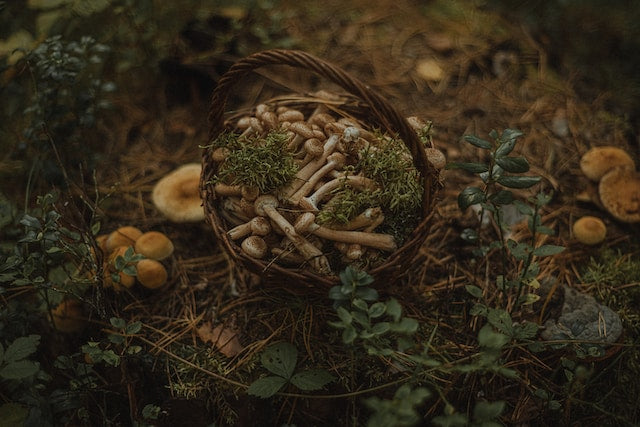

· By Brooke Hamilton-Benjestorf
A Look Into Urban Foraging
I recently read Sarah Moss’s deeply unsettling novella, Ghost Wall. (Highly recommend if you’re up for a dark, poignant read.) Among the brilliant multitude of disturbing details, another more benign bit of the story stuck out to me. This was the main character, Silivie’s, natural ability to forage in the near-wilderness. It wasn’t an untouched area, but there was still much to be picked, dried, or turned into a stew.
Though Silvie is a fictional character (thank god), she got me thinking about my total lack of education or natural leaning toward these sorts of survival skills (and hobbies). I also wondered, is this an accurate depiction? Is there much to be foraged in a picked over, urbanized area? It turns out the answer is yes. But before we get into what’s to be had (specifically in California), I’ve also learned that there’s an essential foraging etiquette that’s wildly important to uphold.
All of these guidelines revolve around our having respect for our natural habitats. Because they’re also the homes and food sources for beloved wildlife, we must tread lightly. First, know about the local habitat and ecosystem before you set out. Are there wild animals that depend on the plants you plan on foraging? What is the prevalence of the plant species? Are they invasive, endangered? Once you’re confident that you know what is appropriate to gather, mind how much you take. The general rule is to take no more than 10 - 20% of what you find. And generally, try to find pieces of the plant that have already fallen off, or prune lightly [1].
Now that we have a handle on manners, let’s review what’s out there. There is so much to be had! I have to admit, I was surprised by the extensive list. Here is a handful of the available goods: wild pears, white sage, mallow, dandelion, fennel, wild garlic, sorrel, prickly pear, stinging nettle, mint, mesquite, black nightshade, currants, hemlock, blackberries, acorns, black mustard, manzanita, and nasturtium [2].
A couple of these piqued my interest and I dove a little deeper. Mesquite! Immediately, my mind conjured a smoky deliciousness. I was wrong. It’s actually sweet. And a superfood! Mesquite shrubs and trees contain beans and seed pods high in zinc, magnesium, calcium, iron, potassium, and lysine, along with antiinflammatory and antioxidant properties. The mesquite flower can be used to make tea, while the beans and pods can be ground into a sugar substitute. In the particular case of mesquite, contrary to the rule of thumb, it is preferable to leave fallen seed pods on the ground and gather from the tree so that wildlife and livestock can graze on the plant’s droppings. Each plant is unique and should be researched and approached as such [3].
Another from the list that caught my attention is black nightshade - because it sounds witchy and poisonous. Turns out it’s just as common and edible as a potato or a pepper, when foraged carefully and cooked properly. However, the whole plant is poisonous when unripe or improperly cooked. The berries need to be fully ripe and fully black (no green stripes) in order to safely consume them. The leaves and stems are only edible when boiled in a very specific way. BUT, when you do find some ripe, black berries coupled with their white star-shaped flowers, you can use them to make salsas, jams, and any other recipe in which you might use berries. (They taste like sugary tomatoes.) Nightshade can be found in coastal areas, along roadsides, and in woodlands and wetlands. Before you forage for black nightshade, however, make sure to study the differences between it and its shadowy sister, deadly nightshade, whose flowers are purple. It’s a no go on the purple-flowers and green berries [4]!
Just by skimming the surface, we’ve found that there can be a plentiful harvest in urban foraging. And, more importantly, that foraging must be approached with the utmost care - for the safety of the ecosystems we work to support and of our own bodies. So, grab your Birkin basket, a local guidebook on the flora, and a friend. Slow down, smell the plants, hold them in your hands. Enjoy the hike.
[2] http://dinafisher.net/foraging/
[4] http://dinafisher.net/foraging/black-nightshade/
Photo by Vasilina Sirotina on Unsplash